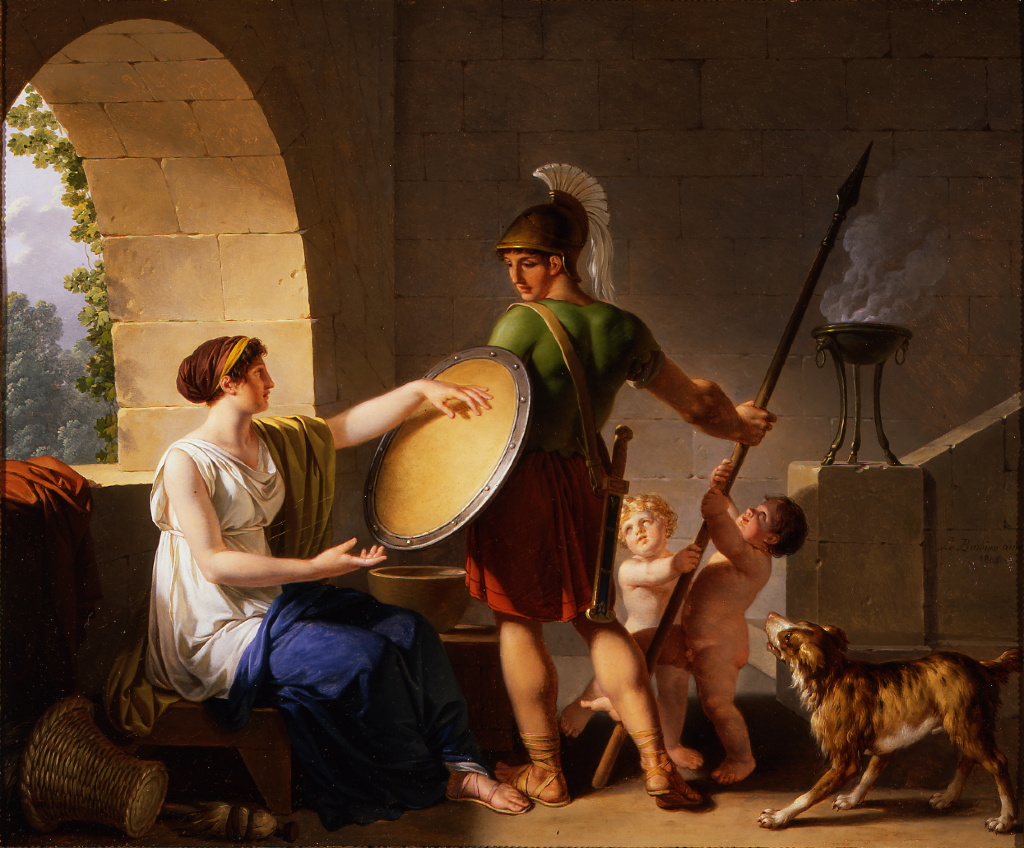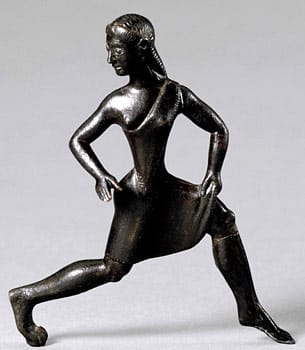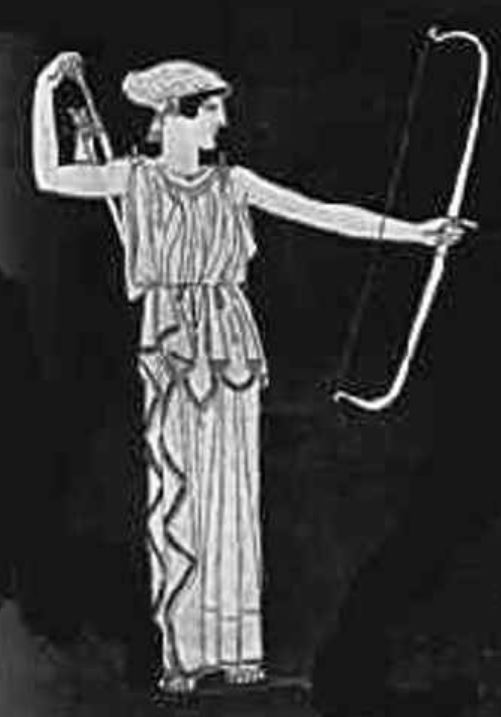by Nicole Saldarriaga, Contributing Writer, Classical Wisdom
Ladies and gentlemen, let’s talk about Sparta.
This is historically a favorite topic of conversation when it comes to the cultures and civilizations of Ancient Greece, and its popularity seems like kind of a no-brainer. After all, who isn’t at least a tiny bit fascinated by a race of warrior men who were notorious for eating, breathing, and sleeping battle?
Today, however, we’re going to take a slightly different approach to this conversation. After a brief examination of the Spartan civilization in general, and a quick look at the lives of the men for context, we’re going to shift our focus and take a look at the tough-as-nails backbone of Sparta: its women!
First, some context: Sparta itself was a Greek city-state that occupied what is today the southern region of Greece, and the state was known primarily for its dominant warrior culture. In fact, military might was so important to Spartan society that participation in the military was compulsory for all men—if for some reason a Spartan man could not be a soldier, he would not be considered a citizen and would not be given his basic rights (if, in fact, he ever made it to adulthood, as those too weak to be warriors were often killed off early).
Sparta eventually reached the height of its power after its defeat of Athens in the Peloponnesian War, though they didn’t get to enjoy this dominance for very long—just a little over a hundred years later, the Spartans experienced a crushing defeat at the hands of Thebes and never fully recovered.
Living, Breathing, Killing Machines
To understand exactly how obsessed the Spartans were with battle, we have to take a look at their cultural practices, specifically those surrounding children and young boys. The pressure placed on Spartan citizens to be tough started early—specifically at the moment of birth. Though the worth of a child was often judged, in the ancient world, by his or her apparent strength, Sparta was the first culture to establish a state-sanctioned committee for determining the strength of newborns. After birth, the baby was brought before this committee, and if the child was deemed weak or deformed in any way, he was left to die on a mountainside.
To understand exactly how obsessed the Spartans were with battle, we have to take a look at their cultural practices, specifically those surrounding children and young boys. The pressure placed on Spartan citizens to be tough started early—specifically at the moment of birth. Though the worth of a child was often judged, in the ancient world, by his or her apparent strength, Sparta was the first culture to establish a state-sanctioned committee for determining the strength of newborns. After birth, the baby was brought before this committee, and if the child was deemed weak or deformed in any way, he was left to die on a mountainside.
Sounds harsh, right? (Not to mention horrific—though unfortunately we must remember that infanticide wasn’t so rare in the ancient world. Sparta just seems to be the first culture to institutionalize it). But this is just the beginning for a Spartan boy. At age seven, all boys would be taken from their families to begin their compulsory military training in a state-sponsored program called the Agoge. From age seven to age thirty, these boys would live communally, in particularly harsh barrack conditions (for example, the boys hardly got any food if they didn’t learn to steal it—a skill that was seen as useful during military campaigns—and they had to learn to steal it well. Though stealing food was encouraged, any boy caught stealing would be flogged within an inch of his life).
Through intense training, harsh hazing and humiliation (which was considered an incentive to train harder), and fierce competition among the men which was encouraged and enflamed by their own instructors, Spartan men were molded into living, breathing killing machines. At age twenty, they were considered fully grown soldiers, and became part of the army full-time until the age of thirty, at which point they were allowed to marry and start families. However, every Spartan male was considered on active duty until the ripe old age of sixty.
But enough about the men! Today we’re going to take a look at the ladies—and, though they’re not as often discussed, you can bet that they were just as tough (and frightening) as the men.
Let Loose the Ladies!
Like their male counterparts, female newborns were also brought before the state committee to be judged for apparent strength and vitality—though Spartan women weren’t warriors, they were still expected to be physically strong and healthy in order to survive the trials of childbirth and child-rearing, which were considered the most important tasks for a Spartan woman. In fact, men often chose to marry women that displayed great vitality and strength (and were often viciously criticized for choosing to marry petite or very thin, delicate women) so that their offspring would be strong. If this sounds to you like run-of-the-mill sexism (women are judged based on their child-bearing characteristics and are expected to focus wholly on that task), think again. While the Spartan attitude toward women definitely wouldn’t be acceptable to many in this age, it actually paved the way for Spartan women to be given more rights than women in any other culture at the time (and even some modern-day cultures).
For example, Spartan baby girls, unlike their Athenian counterparts, were given the same amount of food and care as baby boys, as the main goal was to ensure their strong development. Even as they aged, Spartan women were generally allowed to eat more than women of other ancient cultures, probably to compensate for their participation in strenuous physical sports like running, javelin throwing, and discus throwing (in which they were trained from the time they were seven).
It is also generally believed that all Spartan women received an education in poetry, music, dancing, and art—and there is evidence that many Spartan women were literate.
So, for the most part, Spartan women received an education comparable to that of the men, but unlike the men they weren’t forced to leave their families at the age of seven—in other words, women got a lot of the benefits of that education without the added stresses of communal living, harsh conditions, poor food quality, and the other general abuses that were supposed to make the men tougher.
Spartan women were also encouraged to get married at a later age than most—usually around nineteen or twenty—making marriage and childbirth generally safer and healthier for both mother and child. And, because of their many physical activities, they were allowed to wear notoriously short dresses that exposed their thighs—a fashion trend that seemed beyond radical to the rest of Ancient Greece.
Women in Charge
Perhaps most surprisingly, Spartan women were given full citizenship rights. They were allowed to own and inherit their own property, and they were allowed to divorce their husbands without repercussions or societal vilification—and they were neither encouraged to nor prevented from re-marrying (they also kept full custody of their children).
In general, because the men were so often away at war, the women were fully in charge of the household and general city business. Thanks to the large population of slaves (called Helots) that took care of domestic tasks and labor, the women were actually more likely to be involved in government, agriculture, city planning, and the like.
When it comes to awesome facts about Spartan women, however, my personal favorite is a seemingly small detail—but one that, to me, speaks volumes.
In Spartan culture, nearly all men and women were buried in unmarked graves—there were only two classes of people who were deemed worthy of graves that displayed their names, in glory: men who had died in battle, and women who had died in childbirth.
This small detail shows that childbirth—that all important female task—was considered a trial akin to battle, and that to die in childbirth endowed a woman with as much glory and honor as a man who had given his all and sacrificed his own life for the sake of battle.
It’s definitely too much of a stretch to claim that Sparta enjoyed any kind of “equality” between the sexes—but if that doesn’t prove the extreme respect that Sparta had for its ladies, then I don’t know what does.














One comment
I am impressed by the Spartan education of women but we must not assume that every woman enjoyed such training. It was probably tough for women as well as the abuses that must have happened would have ranged from physical to sexual violence.If a girl or boy was more sensitive they would have absolutely hated it.
Our apologies, you must be logged in to post a comment.